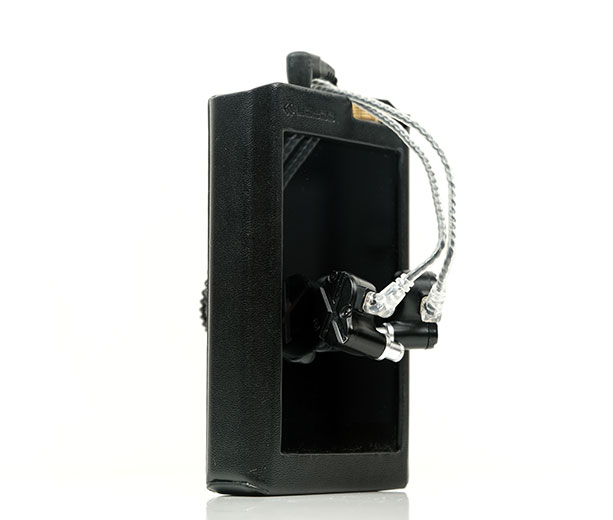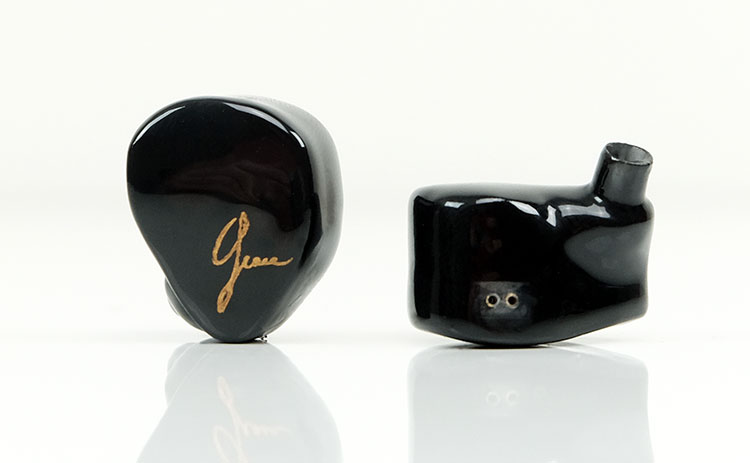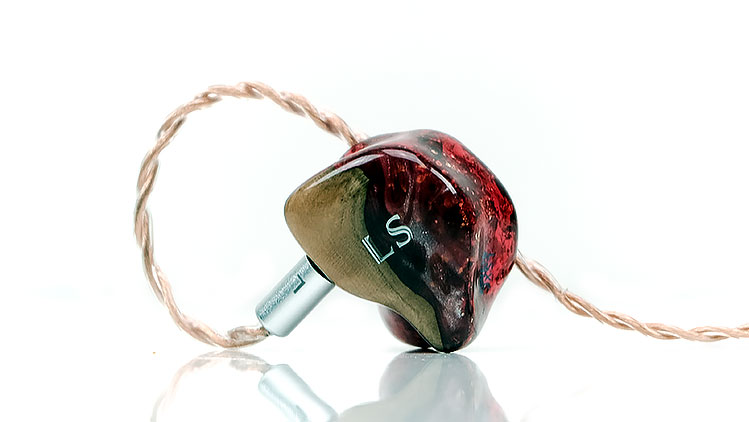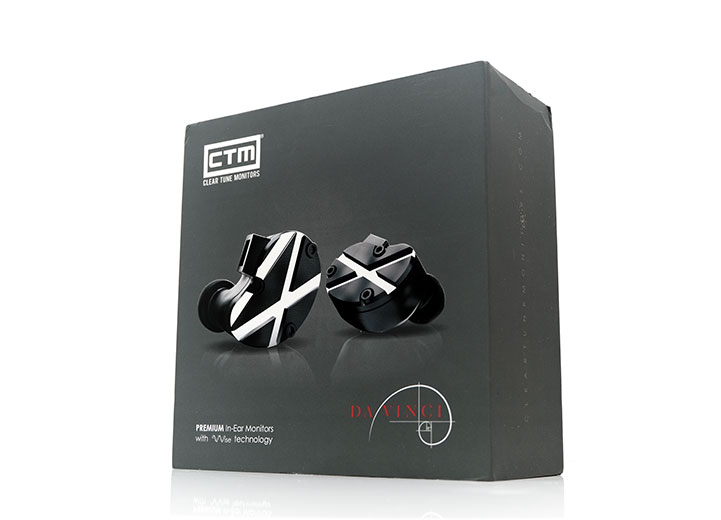Sound Impressions
Summary
The Da Vinci X is a neutral, clean, and clear-sounding monitor that will give you an excellent perception of detail right across the FR. This is their reference flagship and I find it spot on for those with a lust for excellent clarity.
I think this is the 3rd 10-driver monitor I have heard now in the space of 6 months and perhaps this is the most balanced yet. I say this in reference to the richer and warmer sounds of the Earsonics Grace and the Lark Studio LSXC.
That is not to say that it is an entirely linear or flat FR experience. The low-end does have a bit of elevation as well as some excellent extension for a wholly BA design. The low-end has a satisfying ‘thud’ when called upon but doesn’t kick up a lot of warmth and softness in the process.
The decay on the X drivers has a very nice balance with just a hint more length to the low-end drivers moving to something much quicker and slightly drier by the time you get to those two top-end smaller BA drivers. It prevents the X from sounding sterile even though I still would class the timbre as quite neutral.
It gets that neutral quality through a midrange and treble driver combo that primarily focuses on clarity and speed rather than trying to outdo the low-end in richness and warmth. As a result, instrumental separation is excellent and imaging cues are dead easy to pick up and seem very accurate to my ear.
Preferences
However, some might find the midrange timbre to be a bit on the lean side and if you do I suggest having a listen to the IX which trades in that clarity for a little more timbral richness (and a $400 discount).
If you do not want to sacrifice the X’s excellent treble reach and articulation move to the foam tips for a little more body. That is probably the ideal combo from the testing done on the X here.
Staging
Staging on the Da Vinci X might have a slight bias towards height over width but the perception of depth is excellent for a BA monitor.
It won’t cast a vast heavily textured dynamic driver type reach but the clarity sub-100Hz is excellent with little in the way of roll-off nor a mid-bass elevation that clouds the sense of sub-bass clarity.
Midrange instrumental staging is not hugely expansive, more of a natural medium-size hall experience than arena like which I tend to prefer. It does make excellent use of that space and combined with the nice sense of depth I do find it delivers an above-average 3-dimension experience.
Vocals are neutral to ever so slightly forward with what sounds like a small 1-2k bump. Instrumental separation is excellent on the X.
Upper mids and treble have a more forward-sounding nature to them with plenty of headroom and air. The treble extension with those 2 BA drivers is excellent, articulate, and very nicely balanced also.
Bass
The low-end control and clarity on the X are excellent. It is fairly linear sounding but not wholly flat in its FR. There is a slight elevation from 60-100Hz but it is not overly emphasized and compared to its sibling, the IX, not as warm or full-bodied.
Instead, it is fast, tight, and punchy with a good trade-off in terms of mid-bass warmth and sub-bass power. The layering and definition on the X low-end are superb actually and not once did I pick up any bleed or softness in its response.
That is important for my own preference. I like power but I hate unnecessary bloom and warmth smudging lower-pitched instrumental clarity. The X impressively avoids that without ever sounding rolled-off or too lean. Instead, it is a heck of a natural-sounding performance.
You can add a little bit of warmth by up to 3dB with the red bass filter and it will do a nice job at that but I personally prefer the tighter stock silver filters level of control.
Mids
There is a little dip from the mid-bass to the lower mids pushing back some instrumental positioning but not that far back on the X.
Instrumental timbre in the mids is dominated by those slightly smaller B4 BA’s covering that spectrum so it moves more towards a decidedly neutral to slightly drier tone and a little less body.
They are quick-paced, boasting some impressive levels of separation, and have no issues with complex musical passages be it classical, ambient, or even raw pit moshing madness.
Vocals do not lack presence. The X lacks that slightly hollow vocal tone and presence that the likes of the EE Phantom sometimes suffer beyond 1-2k. The voicing is not as rich or warm sounding as the IX but they do benefit from a very black background with plenty of space to breathe.
The odd time you will get a slight hardness to higher-pitched female vocals from the odd-harmonic treble overtones creeping down in the mids but nothing I would define as sibilant. Using the foam tips even a neutral source such as the Lotoo PAW Gold Touch sounded closer to natural than bright.
Treble
The X’s upper mids and lower treble are further forward and slightly elevated to my ear but not to a peaky level. There is some elevation also around the 8k marker for enhanced sparkle.
All elevated FR spots do not overly dominate one over the other so whilst the higher-pitched timbre is quite neutral and energetic it is not the sort of sound that you can define as hot or peaky.
There is a little leanness in instrumental and higher-pitched synth tones so the treble tone is more ethereal and light in body. However, the extension and articulation are outstanding with tons of headroom and air.
Foam tips and the blue filter hit the right mark for me on a personal preference level with a touch more body and smoothness in the X’s top-end without a loss of detail and air.
Synergy
Efficiency & Noise
The Da Vinci X is rated at 43.8Ω and 117.2dB SPL and you would think that a higher impedance rating should serve you well for noise but in actual fact, the X is fairly sensitive.
This is not a monitor as sensitive as the likes of the Campfire Andromeda, Solaris, or EE’s Phantom but still fairly easy to drive from most moderate sources and DAPs.
The X will pick up a little noise from DAPs with higher noise floor such as the FiiO X5iii. In both its unbalanced and balanced output we did detect a little hiss at lower volumes.
On newer DAPs such as iBasso’s DX220 with AMP1 MKII and the Lotoo PAW Gold Touch, there are no such issues with plenty of amping headroom and a very black background on both balanced and unbalanced outputs.
Scaling
The Da Vinci is quite a flexible monitor for pairing and synergy and will sound just fine with weaker sources like the HiBy R3 in balanced output right up to $1k+ DAPs such as the Colorfly U8 and Lotoo’s flagship PAW Gold Touch.
The pertinent question is will the X scale with better sources and the short answer is yes, to a degree. It is not as extreme as the older Vega from Campfire Audio, you do not need plenty of power to drive it.
However, portable amps such as the xCAN from iFi Audio sounded punchier and with better levels of dynamic range when paired with the X compared to the likes of the HiBy R3 which sounded leaner and flatter.
More powerful DAPs such as the Sony 1Z and iBasso’s AMP1 MK2 on the DX220 were also much more resolving and expansive sounding with the Da Vinci X.
Tweaking
EQ
CTM’s included filters combined with silicone and foam tips do help to fine-tune the presentation to match the source you want to use with it. You can also PMEQ or MSEB (HiBy DSP) that timbre if you need some more body or want to tone down the treble. I also found it quite responsive to traditional 10-band EQ on the likes of the DX220 and the Colorfly U8.
Filters
With neutral sources such as the PAW Gold Touch and the Colorfly U8, slipping in the blue filter with foam tips produced a slightly warmer tinge than the stock filter and certainly more body than the silicone tips could provide.
Using the stock silver filters and foam tips were perfectly fine paired with the punchier but slightly warmer Sony 1Z. In fact, for most modern music this was my favorite pairing.
The X did an excellent job picking up on the low-end power of the Sony and there was more than enough power to drive them, even using the unbalanced output. I would advise against using the bass filter on this combo though, the resulting sound from the X’s low-end was a little soft for my taste. Stock or the blue filter is a better pairing for this combo.
Select Comparisons
Earsonics Grace
€2000
Technical
The Earsonics Grace is also a 10 balanced armature driver universal IEM priced at €2000 which is not too far off the $2400 marker laid down by the Da Vinci X. Like the X, the Grace is also the flagship in Earsonics universal line-up.
The configuration for the Grace is two full-range vented drivers for the low-end, four smaller midrange BA drivers for the mids, and four BA drivers for the highs. The X differs here with a 5-way crossover consisting of 4 for the lows, 4 for the mids, and 2 for the highs.
Whilst both come in a monotone black finish for the shell and motifs on the front plates, the Grace is much lighter due to its all acrylic build compared to the sturdier but heavier X.
It is also the smaller of the two monitors and is a little more comfortable in the ear. The X isolates better, particularly with the foam tips. The X’s wider nozzle goes more for a little pressure build-up in the ear canal to get that seal.
Cables are much better with the Da Vinci X. Even the stock cable looks stronger than the stock of the Grace. The Juba premium 4-wire is also a significant step-up in build quality and sonic performance.
Performance
The Grace is rated at 26.6Ω and 119dB SPL compared to the Da Vinci’s X’s 43.8Ω and 117.2dB. Despite the lower impedance and higher SPL of the Grace, we did find the Da Vinci X to be the slightly easier monitor to drive in unbalanced and balanced modes from the likes of the budget HiBy R3 and the flagship Lotoo PAW Gold Touch.
However, the Grace seems to be less sensitive to higher noise floors and was fairly quiet on the likes of the FiiO X5iii DAP which is known to show some hiss, especially in balanced output. The X did give us a little hiss but not Andromeda levels of noise.
If you fancy pairing either of these to the likes of the DX220 then good news, you will get a black background, zero hiss in both balanced and unbalanced modes, and plenty of room for volume control in low gain.
Tuning
Quite a tuning difference between these two 10-driver monitors. The Grace is warmer, softer, easier on the ear with a slightly rolled-off treble for a smooth rounded signature. The Da Vinci X opts for something more balanced, cleaner, leaner, and with more treble presence and sparkle.
The X staging is not hugely expansive but does have a better level of instrumental separation compared to the Grace which shoots for a gander soundstage by pushing back the mids a little further in comparison.
Not that the Grace mids are lacking, I find the vocal presence on the Grace to have a slightly forward nature about them. Rather, the X is more intimate, more upfront, and lacks the slight vagueness the Grace’s softer sound tends to deliver.
The bass on both have similar levels of extension, however, the X is a bit more neutral and linear in its low-end response and the Grace shows more mid-bass warmth and body.
You get a bit more richness in the lower-mids instrumental timbre on the Grace compared to the neutral sound of the X due to that mid-bass warmth but I find it a bit loose in comparison to the X’s tighter punchier sound.
Lark Studio LSXC
$1699
Technical
Like the Grace and the Da Vinci X, the LSXC is a 10 balanced armature driver monitor. The precise configuration is 3 for the lows, 4 for the mids, 2 for the highs, and 1 for the super-highs using a passive 4-way crossover design. The X configuration is a 5-way crossover consisting of 4 for the lows, 4 for the mids, and 2 for the highs.
You can get the LSXC in either universal (LSX) or custom design and the starting price is a little cheaper at $1699. All designs offered are at no additional cost from Lark Studio which is a very nice bonus because they do some great designs.
They have an LSXC Splendor option at $1899 which I highly recommend for the added PWAudio Saladin cable bundled with it. It is a big upgrade on the stock cable performance and a better performer than the CTM Juba which comes with the Da Vinci X.
Performance
The LSXC is rated at 20Ω and 110dB SPL compared to the Da Vinci X which is rated at 43.8Ω and 117.2dB SPL. In terms of volume matching from our testing from a multitude of sources, there is only a tiny gap for volume on sources such as the Lotoo PAW Gold and the FiiO X5iii in balanced and unbalanced output formats.
What we did notice though was the X was more sensitive to the X5iii noise floor than the LSXC. We could definitely detect a bit more hiss when the volume was turned down on the X in balanced mode. Both had a nice black background on the Lotoo PAW Gold and the iBasso DX220.
Tuning
Two fairly different presentations here with the LSXC opting for a warmer, fleshier, and more intimate sound and the Da Vinci X going for a cleaner, neutral performance with more top-end sparkle.
Both are good with their respective upgrade cables, the Juba for the X and the Saladin for the LSXC. I would use them over the stock copper for optimal clarity.
Timbre on the LSXC is richer, warmer, and more even harmonic biased There is a definite mid-bass bump on the LSXC with some warmth moving into the mids keep the instrumental sound a bit soft but also nicely textured.
The Da Vinci X shows off more instrumental separation with a leaner instrumental sound and neutral timbre that also creeps into vocal pitching. Bass is also more linear with a slight dip in the lower mids.
The treble on the X is more extended and it is the airier more open sounding of the two monitors. The LSXC sounds rolled off by comparison with less headroom. The X may lack a little of the LSXC “juiciness” but it is the more detailed of the two 10 driver monitors.
CTM Da Vinci IX
$2000
Technical
The Da Vinci IX or 9 if you will, is the sibling of the X, using 9, instead of 10 balanced armature drivers and is priced a little cheaper at $2000.
The precise configuration is 4 for the lows, 4 for the mids, and just 1 for the highs with a 4-way crossover. The Da Vinci X has that additional BA driver for the highs and uses a more complex 5-way crossover. Both are using W.I.S.E. tech in their internal builds.
Externally the core design and finish are almost the exact same between the two. The only key difference is the front faceplate of the IX not having a chrome paint finish and of course, showing IX instead of X. It is a little more understated looking but I like it.
The other difference is weight. The Da Vinci X feels a little heavier or denser in the hand. You can also feel that in the ear though both have the same levels of seal. The IX is just the marginally more comfortable of the two in the ear due to the weight difference but it’s a marginal gap.
The IX also comes with that nice Juba premium SPC 4-wire cable as well as the stock black-finished 50″ OFC cable. All other accessories included are the same in both the X and IX retail boxes.
Performance
The impedance and SPL of the IX are slightly different from the Da Vinci X. The IX is rated at 46.8 Ω and 118dB SPL compared to the Da Vinci X which is rated at 43.8Ω and 117.2dB SPL. In real life, that is hardly a discernible gap and in our testing, you will not really hear any volume difference between the two monitors.
We ran it balanced and unbalanced in the iBasso DX220 and Lotoo’s PAW Gold Touch and both volume-matched perfectly.
More than that both showed the exact same responses to sources with higher noise floors such as the X5iii with just a margin of light hiss in both balanced and unbalanced outputs. Both monitors had a perfectly black background on the Lotoo and iBasso DAPs in either balanced or unbalanced.
Tuning
IX is a more euphonic-sounding monitor than the neutral Da Vinci X. It delivers a little more low-end body and warmth but not as much as the Grace or LSXC. The X sounds comparatively neutral on the low-end but also a little tighter.
Mids are slightly further forward sounding on the IX, especially vocals, and they have a little more richness and even-harmonic bias to them than the cooler Da Vinci X.
With one less driver for the top end, CTM has opted for a more relaxed treble presentation. It is not as airy, clear, or forward in its tuning compared to the Da Vinci X so percussion lacks a little bite and presence.
That relaxed tuning does influence the overall timbre of the IX. Combined with the low-end warmth you get a very forgiving sibilant-free sound. A sound I quite enjoyed at CanJam when I first heard it and one that I find more on the fun side of things.
Our Verdict
The Da Vinci X is a tremendously versatile reference type universal monitor and one of the better 10-drivers IEM’s I have heard at this price point. The tuning is a clever mix of natural and analytical with a strong emphasis on clarity and air.
There is less of a rich organic sound and more of a balanced neutral performance. You want warmth and smoothness then grab their IX which we will review soon.
And yet, with the filters you can introduce a level of variation which gives it the X that enticing flexibility. I didn’t hear those filters at CanJam. If I did I would be in the X camp heading out the door. They do help a lot when it comes to source synergy.
This is a dark horse monitor for me when it comes to the flagship or reference-type competition at this level. Well worth a listen if you get a chance.
Clear Tune Monitors Da Vinci X Specifications
- Input Sensitivity 117.2dB @ 1kHz
- Freq Response 20 Hz to 20 kHz
- Speaker Single Armature Balanced
- Impedance 43.8 ohm @ 1 kHz
- THD 0.25% @1kHz
- Noise Isolation -26dB
- Input Connector 1/8″ (3.5mm)







